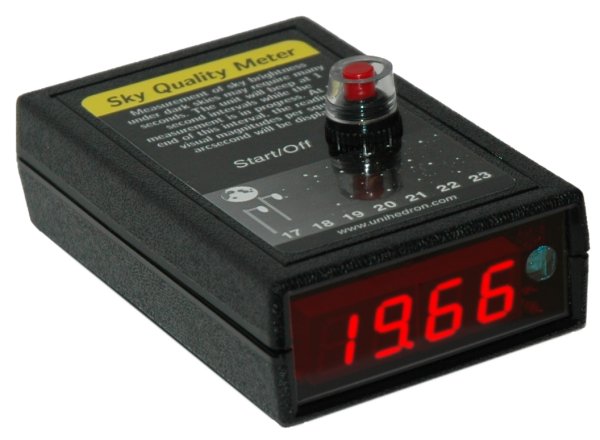There are a lot of things to keep in mind before starting to search for a good place, and this is because it depends on many conditions:
 - Our own observing preferences:
- Our own observing preferences:- Since planetary observation could take place in the center of our city, a good choice could be in our own terrace or balcony.
- Completely different is the Deep Space observation. To observe deep space objects such as galaxies, nebulas or even star cluster requires a place without any disturbance light.
- Single or multiple objects to be observed.
- Meteorological conditions:
- The same place could have big different observational conditions from one night to other. Some factors such as seeing could dramatically affect to the observing conditions even when at first sight we didn't "detect" anything.
- Temperature during the day because it affects at ground-layer since during the night you could be affected by turbulences blurring the images.
- Very thin layers of clouds, which sometimes are almost invisible to naked eye.
- Direction:
- Depending on the kind of observing session and objects to observe, you could choice different places to go. For example, if you're going to mainly observe deep space objects located in north direction you should keep any medium-big city or any other light-pollution source at your back in south direction.
- Other factors:
- Such as jet streams, vehicles headlights, dust in suspension, wind, ...
So, how can we know if a place it's good engouh for us to observe the night sky?
Most of the listed factors, as well as some others, could change overnight, but "quality" of the sky could be measured by using a SQM (Sky Quality Meter).
A SQM measures how good the night sky or site is and through the night, helps to compare the sky brightness night-to-night and allows us document and share these values to keep the information as historical data. This information is displayed in magnitudes per square arcsecond.
And how do we know if it is good enough?
There are some accepted values and thresholds to determine if the brightness of the sky is acceptable, good, extraordinary, etc., but, in summary, any value above 20.5 magnitudes per square arcsec displayed in a SQM should be interpreted as good enough to practical observation and near or above 21,5 magnitudes per square arcsec as excellent observational conditions. Just point the SQM* overhead (to the zenith) and you'll get the measure in just a second!
From my point of view and experience, a SQM is a very handy tool and resource to search and find a good place for the observational astronomy. But, on the other hand, and since it is not such an affordable price, you may want to think if it is worth the opportunity cost based on your observational preferences.
* The SQM sensor is affected by the temperature so (as the manufacturer recommends) "for the most accurate results, it is best to take many readings and disregard the very first reading"
Related and interesting articles and information:
http://www.darksky.org/night-sky-conservation/269
http://www.globeatnight.org/light-pollution-interactive.php
http://www.skyandtelescope.com/astronomy-resources/rate-your-skyglow/
http://www.skyandtelescope.com/astronomy-resources/light-pollution-and-astronomy-the-bortle-dark-sky-scale/
https://en.wikipedia.org/wiki/Skyglow
http://www.lrc.rpi.edu/programs/nlpip/lightinganswers/lightpollution/abstract.asp

No hay comentarios:
Publicar un comentario